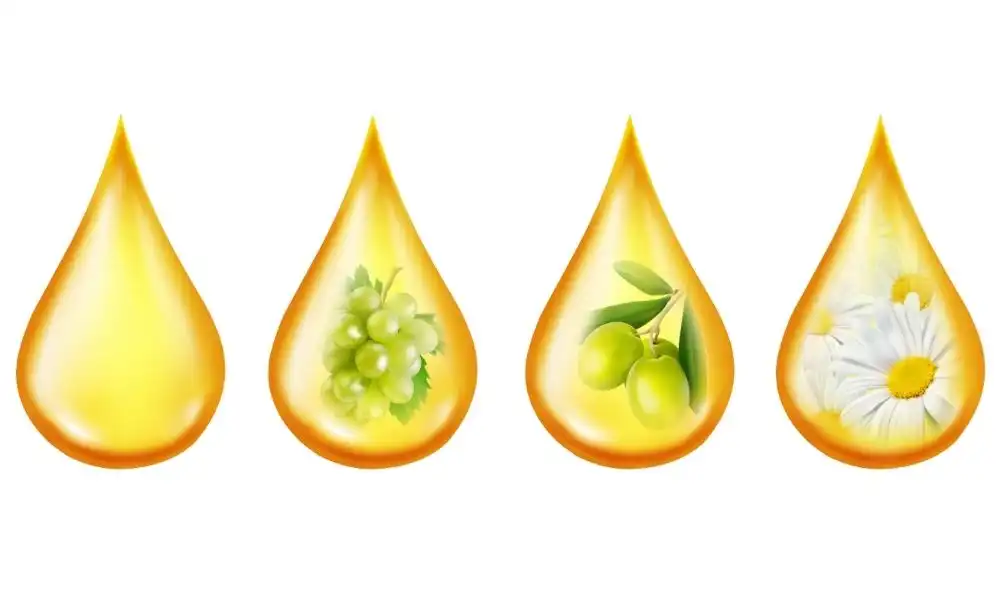This article has been reviewed by experts

Draksharishta, also known as Drakshasava or Drakshadi Kashayam, is a traditional Ayurvedic herbal formulation commonly used in Ayurvedic medicine. It is primarily known for its digestive and rejuvenating properties and is often used to improve overall health and well-being. The formulation is available from a variety of brands with variations in ingredients and may be marketed as Kerala Draksharishta, Draksharishtam Kottakkal, Draksharishta, and so on.
Draksharishta Ingredients
Despite variation among different Ayurvedic manufacturers, Draksharishta typically contains a combination of various herbs and natural ingredients. Here are some common ingredients found in Draksharishta (1):
- Draksha (Grapes): Draksha is the primary ingredient, and it provides natural sweetness to the formulation. Grapes are also rich in antioxidants and nutrients.
- Munakka (Black raisins): Munakka is a type of raisin or dried grape that is used for its nutritional and therapeutic properties.
- Kankola (Long Pepper): Kankola is a spice known for its digestive and carminative properties.
- Ela (Cardamom): Ela, or cardamom, adds flavour and has digestive benefits.
- Tejpatra (Bay Leaf): Tejpatra is used for its aromatic qualities and potential digestive benefits.
- Dalchini (Cinnamon): Cinnamon is known for its flavour and warming properties.
- Elaichi (Cardamom Seeds): Cardamom seeds, like cardamom pods, are included for flavour and digestive benefits.
- Lavanga (Clove): Cloves provide a strong, aromatic flavour and may have digestive properties.
- Jeeraka (Cumin Seeds): Cumin seeds are often used for their digestive and carminative effects.
- Dhataki (Woodfordia fruticosa): Dhataki flowers are a key ingredient used in the fermentation process of Draksharishta. They also have medicinal properties.
- Guda (Jaggery or raw sugar): Guda provides sweetness to the formulation and acts as a natural preservative.
Draksharishta is prepared through a fermentation process, which is a common method in Ayurvedic medicine to extract and preserve the therapeutic properties of herbs (2).
Draksharishta Benefits
- Digestive Health: Draksharishta is commonly used to improve digestion. It contains herbs and spices like cardamom, cinnamon, cumin, and long pepper, which are known for their digestive properties (3). These ingredients may help stimulate digestive enzymes, reduce bloating, and alleviate indigestion.
- Rejuvenation and Tonic: Draksharishta is considered a Rasayana in Ayurveda, which means it is believed to have rejuvenating and tonic effects on the body. It may help improve overall vitality and strengthen the immune system.
- Anemia and Iron Deficiency: The raisins (draksha) used in Draksharishta are a good source of iron. Iron is essential for the production of red blood cells and can be beneficial for individuals with anaemia or iron deficiency (4).
- Respiratory Health: Some Ayurvedic practitioners recommend Draksharishta for respiratory conditions. It may help alleviate symptoms of cough and cold by reducing inflammation in the respiratory tract (3).
- Anti-Inflammatory: Several ingredients in Draksharishta, such as cinnamon and cloves, are known for their anti-inflammatory properties. These components may help reduce inflammation and associated discomfort (5).
- Fights Infections: Draksharishta benefits that include antimicrobial activity make it an important Ayurvedic medicine in the treatment of infectious diseases. Research shows it to be effective against pathogens such as Staphylococcus aureus, bacillus subtilis, Salmonella typhi, Escherichia coli and Pseudomonas aeruginosa (6).
- Cardiovascular Health: Some Ayurvedic texts suggest that Draksharishta can support heart health by helping to regulate blood pressure and improve circulation. The cardioprotective benefits of Draksharishta have also been confirmed by studies which suggest that this may be linked to antioxidant protection (7).
- Mild Laxative: Draksharishta is believed to have mild laxative properties and can help relieve constipation by promoting bowel movements.
Although you may have heard about Draksharishta benefits for hair and skin care, the formulation does not directly promote skin or hair care and is not specifically recommended for the same. However, it is believed to indirectly contribute to improved skin and hair health by supporting overall bodily functions.
How To Use Draksharishta
Draksharishta is typically consumed orally, and the dosage recommendations may vary depending on individual factors and the specific health condition it is intended to address. Dosage instructions should be provided by a qualified Ayurvedic practitioner, as they consider factors such as age, body constitution (dosha), and the specific ailment. The general recommendations for Draksharishta are as follows:
- Standard dosage for adults can range from 10 ml to 30 ml (approximately 2 to 6 teaspoons) per day. It is usually consumed after meals.
- Draksharishta is usually diluted with an equal quantity of water before consumption, although this can vary based on individual recommendations. Dilution helps reduce the alcoholic content and makes it more palatable.
- The frequency of consumption can vary but is often once or twice a day, depending on the specific instructions from an Ayurvedic practitioner.
Draksharishta Side Effects
While Draksharishta is generally considered safe when used as directed by a qualified Ayurvedic practitioner, it may not be suitable for everyone, and there can be potential side effects and considerations to keep in mind:
- Alcohol Content: Draksharishta contains alcohol as a result of the fermentation process. Individuals with alcohol sensitivities, liver conditions, or those avoiding alcohol for religious or personal reasons should exercise caution or consider alternative remedies.
- Digestive Discomfort: In some cases, Draksharishta may cause digestive discomfort, such as mild bloating or gas. This is more likely to occur when it is taken in excessive doses.
- Hypoglycemia: Due to its high sugar content from ingredients like raisins and jaggery, individuals with diabetes should be cautious when using Draksharishta, as it can potentially affect blood sugar levels.
- Allergies: Some individuals may be allergic to specific ingredients in Draksharishta, such as raisins or certain spices. Allergic reactions, though rare, can occur.
- Drug Interactions: Draksharishta may interact with certain medications. It’s essential to inform your healthcare provider of any Ayurvedic remedies you are using to avoid potential interactions.
- Pregnancy and Lactation: Pregnant and breastfeeding women should use Draksharishta only under the guidance of a healthcare provider or Ayurvedic practitioner, as safety during these periods is not well established.
Conclusion
While there can be no doubt about the benefits of Draksharishta and its wide-ranging applications, it should be used with caution. As with any potent medication, this product should not be used carelessly. Make it a point to follow the product directions carefully and to consult your doctor. If you already suffer from any preexisting condition and are taking other medications, it is especially important to use Draksharishta under medical supervision.
FAQs
Is Draksharishta safe for children?
Draksharishta is typically considered safe for children when used under the guidance of a qualified Ayurvedic practitioner, who can determine an appropriate dosage based on the child’s age and specific health needs.
How long does a bottle of Draksharishta last, and what is its shelf life?
The shelf life of Draksharishta can vary by manufacturer but is typically several years. The duration a bottle lasts depends on the recommended dosage and frequency of use, which should be specified on the product label.
Can I take Draksharishta with other Ayurvedic or allopathic medications?
It’s advisable to consult with a healthcare provider or Ayurvedic practitioner to check for potential interactions between Draksharishta and other medications, as it may interact with certain drugs or supplements.
Disclaimer: This article is written from a health and lifestyle perspective. It is for general information and not meant to substitute any medical advice. Please consult your doctor for appropriate medical consultation.
References:
- Determination of Quality Standards for Draksharishta, a Polyherbal Ayurvedic Formulation
- The Pharmaceutical evaluation of Draksharishta
- Unravelling the gut-lung axis: insights into microbiome interactions and Traditional Indian Medicine’s perspective on optimal health
- PREPARATION AND EVALUATION OF QUALITY CONTROL PARAMETERS FOR CLASSICAL FERMENTED POLYHERBAL FORMULATION “DRAKSHARISHTA”
- Investigation of the central and peripheral analgesic and anti-inflammatory activity of Draksharishta an Indian Ayurvedic formulation
- Antimicrobial Activity of Draksharishta Prepared by Traditional and Modern Methods
- Cardioprotective Activity of Draksharishta on Isoproterenol Induced Myocardial Infarction












